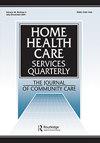O17.3维护服务,响应需求:金士顿(安大略省)快速检测诊所
IF 0.9
Q4 HEALTH POLICY & SERVICES
引用次数: 0
摘要
2020年初,由于COVID-19关闭,加拿大各地的常规性传播感染临床服务陷入停顿,但对性传播感染筛查、检测和治疗的需求仍有增无减。我们报告在大流行期间维持大量、低障碍性传播感染服务的创新模式。快速检测诊所由Kingston, Frontenac和Lennox & Addington (KFL&A)公共卫生公司于2020年6月成立,旨在促进淋病(GC)和衣原体(CT)的核酸扩增检测(NAAT)。诊所每周工作两个半天,邀请客户填写一份摄入表格,并提交自己收集的尿液或拭子样本(直肠、金属、阴道、咽),而无需见医疗保健提供者。结果通过电话沟通,有感染记录的人得到及时治疗。在运营的前六个月(2020年6月19日至2021年1月18日),诊所向347名独特个体(平均年龄27.9岁[IQR 21.0-32.0])提供了383次性传播感染筛查,并对864份自采标本进行了检测。男性检出率为13/184(7.0%),女性检出率为4/163 (2.5%)(p = 0.47)。男性检出率为30/184(16.3%),女性为17/163 (10.4%)(p =0.11)。GC和CT共感染4例。GC或CT总阳性率为5.8%。自采直肠标本阳性率最高(6/46,13.0%),其次为生殖器标本(55/664,8.3%)和咽部标本(5/88,5.7%)。研究结果表明,在2019冠状病毒病危机期间,人们对性健康服务的需求持续存在,对自行采集的标本进行无检查、一次性检测的可行性。淋球菌和衣原体阳性率超过了标准的covid - 19前诊所操作,支持更广泛地扩展快速测试诊所模式。未来的创新可能包括短信和基于网络的结果通知和治疗推荐应用程序。本文章由计算机程序翻译,如有差异,请以英文原文为准。
O17.3 Maintaining Services, Responding to Need: The Kingston (Ontario) Quick Test Clinic
Background In early 2020, routine STI clinical services ground to a halt across Canada as a result of COVID-19 shutdowns, yet the need for STI screening, testing, and treatment continued unabated. We report on an innovative model for maintaining high-volume, low-barrier STI services during the pandemic. Approach The Quick Test Clinic was established in June, 2020 by Kingston, Frontenac and Lennox & Addington (KFL&A) Public Health to facilitate nucleic acid amplification testing (NAAT) for gonorrhea (GC) and chlamydia (CT). Operating two half-days per week, the clinic invited clients to complete an intake form and submit a self-collected urine or swab specimen [rectal, meatal, vaginal, pharyngeal] without seeing a healthcare provider. Results were communicated by telephone, and persons with documented infection were promptly treated. Outcomes/Impact During the first six months of operation (19 June 2020 – 18 Jan 2021), the clinic provided 383 STI screenings to 347 unique individuals (mean age 27.9 years [IQR 21.0–32.0]) and a total of 864 self-collected specimens were tested. GC was detected in 13/184 (7.0%) males vs. 4/163 (2.5%) females (p = 0.47). CT was detected in 30/184 males (16.3%) vs. 17/163 (10.4%) females (p =0.11). A total of 4 persons were co-infected with GC and CT. Overall positivity with either GC or CT was 5.8%. Sample site positivity was highest for self-collected rectal specimens (6/46, 13.0%), followed by genital (55/664, 8.3%) and pharyngeal (5/88, 5.7%) specimens. Innovation and Significance Findings demonstrate the ongoing need for sexual health services during the COVID crisis, and the feasibility of no-exam, drop-off testing of self-collected specimens. Gonococcal and chlamydial positivity rates exceeded that of standard pre-COVID clinic operations, supporting wider expansion of the Quick Test Clinic model. Future innovations may include text messaging and web-based applications for results notification and treatment referral.
求助全文
通过发布文献求助,成功后即可免费获取论文全文。
去求助
来源期刊

HOME HEALTH CARE SERVICES QUARTERLY
HEALTH POLICY & SERVICES-
CiteScore
2.40
自引率
0.00%
发文量
18
期刊介绍:
Home Health Care Services Quarterly continues to publish important research on the cutting edge of home care and alternatives to long-term institutional care for the elderly, disabled, and other population groups that use in-home health care and other community services. The journal is aimed toward service providers and health care specialists involved with health care financing, evaluation of services, organization of services, and public policy issues.
 求助内容:
求助内容: 应助结果提醒方式:
应助结果提醒方式:


